The Bounty Hunter Metal Detector is a high-quality, user-friendly device designed for efficient treasure hunting. Known for its rugged design, lightweight build, and high sensitivity, it offers excellent performance across various terrains, making it ideal for both beginners and experienced detectors. With its intuitive controls and reliable functionality, it remains a trusted choice for hobbyists and professionals alike.
1.1 Overview of the Bounty Hunter Brand
Bounty Hunter is a renowned brand in the metal detecting industry, offering high-quality detectors for hobbyists and professionals. Established with a focus on innovation and durability, the brand provides a wide range of models, from entry-level to advanced devices. Known for their lightweight designs, high sensitivity, and ease of use, Bounty Hunter detectors are popular among treasure hunters worldwide. Their products, such as the TK4 Tracker IV, are praised for their rugged build and ability to perform well in various terrains, making them a trusted choice for metal detecting enthusiasts.
1.2 Importance of Understanding the Instruction Manual
Understanding the instruction manual is crucial for maximizing the performance of your Bounty Hunter metal detector. The manual provides detailed guidance on assembly, operation, and maintenance, ensuring optimal use. It covers key features, settings, and troubleshooting tips, helping users overcome common challenges. By familiarizing yourself with the manual, you can enhance detection accuracy, prolong the device’s lifespan, and make the most of its advanced capabilities. Proper understanding of the manual also ensures safety and compliance with best practices for metal detecting adventures.
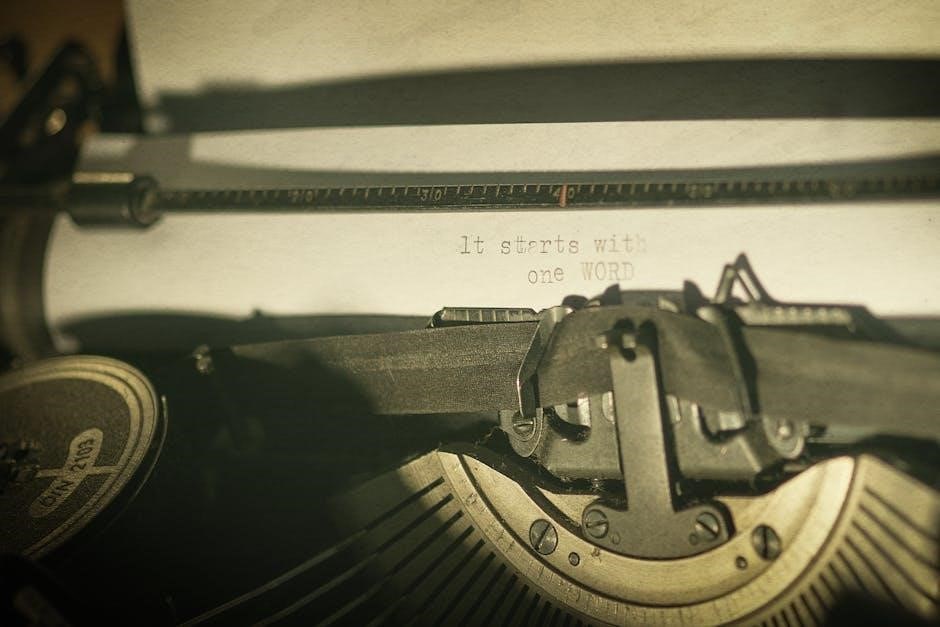
Key Features of the Bounty Hunter Metal Detector
The Bounty Hunter metal detector boasts a rugged design, high sensitivity, and ease of use, making it ideal for both beginners and experienced users. Its lightweight build ensures comfort during extended searches, while its advanced detection capabilities provide accurate results across various terrains. The device is equipped with user-friendly controls and offers reliable performance, making it a versatile tool for treasure hunting enthusiasts.
2.1 Design and Build Quality
The Bounty Hunter metal detector features a sturdy, weather-resistant design with a lightweight yet durable build, ensuring long-lasting performance in various environments. Its ergonomic structure includes an adjustable handle and foam-padded grip for comfort during extended use. The detector’s components are constructed from high-quality materials, providing reliability and resilience against wear and tear. The collapsible design allows for easy storage and transport, making it a practical choice for treasure hunters on the go. Its robust construction ensures it can withstand the rigors of frequent use in challenging terrains.
2.2 Sensitivity and Detection Capabilities
The Bounty Hunter metal detector offers impressive sensitivity and detection capabilities, allowing users to locate a wide range of metal objects with precision. It can detect coins, jewelry, relics, and even small nuggets of gold, depending on the model. The adjustable sensitivity feature ensures optimal performance in various terrains, from beaches to parks. With its advanced coil technology, the detector provides consistent and reliable results, making it suitable for both casual hobbyists and experienced treasure hunters seeking to uncover hidden treasures effectively.
2.3 Ease of Use for Beginners
The Bounty Hunter metal detector is designed to be user-friendly, making it an excellent choice for beginners. Its intuitive control panel and simple adjustments allow new users to start detecting quickly. The detector features preset settings that simplify operation, reducing the learning curve. Lightweight and ergonomically built, it ensures comfort during extended use. Clear audio signals and visual indicators help novices identify targets with ease, providing an enjoyable and rewarding experience right from the start.

Unpacking and Initial Setup
Unpacking your Bounty Hunter metal detector is an exciting first step. Carefully remove the detector, coil, control box, and shaft from the packaging. Insert the batteries and ensure all components are securely connected before proceeding. Follow the manual’s guidance for proper assembly and initial adjustments to prepare your detector for its first use.
3.1 Unpacking the Detector
When you unbox your Bounty Hunter metal detector, you’ll find the main unit, search coil, shaft, and various accessories. Carefully remove each item from the packaging, ensuring no components are damaged. Take a moment to familiarize yourself with each part. The main unit houses the controls, while the search coil is responsible for detecting metal. Accessories like the carrying strap and instruction manual are also included. Before proceeding, inspect all parts for any signs of damage and ensure everything is accounted for. Organize the smaller accessories to avoid misplacement. Refer to the instruction manual for specific details on each component.
3.2 Assembling the Detector
Assembling your Bounty Hunter metal detector is straightforward. Attach the search coil to the shaft using the provided screws or clips. Ensure it is securely fastened to prevent movement during use. Adjust the shaft length to your comfort by sliding it in or out and tightening the knob. Align the coil properly with the shaft to maintain balance. Double-check all connections to ensure they are tight and secure. Refer to the manual for specific assembly steps, as slight variations may exist depending on the model. Proper assembly ensures optimal performance and accuracy during detection.
3.3 Initial Adjustments and Settings
After assembling, fine-tune your Bounty Hunter metal detector for optimal performance. Start by adjusting the sensitivity to match your hunting environment. Use the control panel to set the threshold tone and ensure it is stable. Ground balancing is crucial; follow the manual to adjust this setting based on soil type. Fine-tune the discrimination to filter out unwanted targets like trash. Check the battery level and ensure all cables are securely connected. Make sure the coil is aligned properly and the shaft is adjusted for comfort. Refer to the manual for specific settings tailored to your detector model.
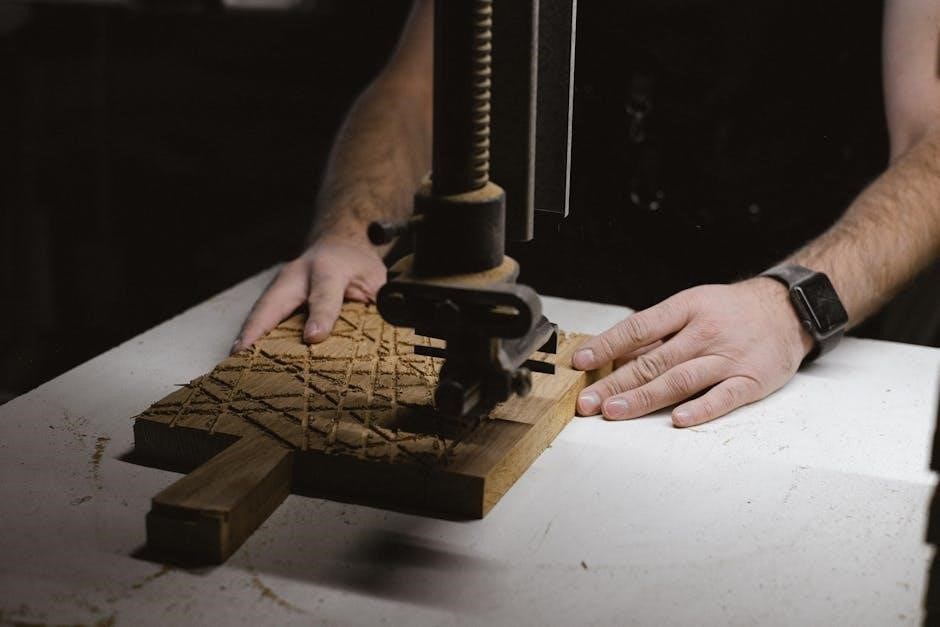

Operating the Metal Detector
Mastering the Bounty Hunter metal detector involves understanding its control panel, adjusting settings for ground balance, and using detection modes effectively to locate targets accurately and efficiently.
4.1 Understanding the Control Panel
The control panel is the heart of the Bounty Hunter metal detector, featuring knobs and buttons for sensitivity, discrimination, and power. The meter or LCD displays target information, while audio controls adjust tones. Understanding each component ensures precise adjustments, optimizing detection for various terrains and targets. Familiarizing yourself with the panel enhances your ability to customize settings for better performance and accurate target identification, making your metal detecting experience more effective and enjoyable overall.
4.2 Ground Balancing for Optimal Performance
Ground balancing adjusts the detector to ignore mineralized soil, reducing false signals. On the Bounty Hunter, press and hold the ground balance button, then pump the coil over the ground until the tone stabilizes. This ensures the detector focuses on targets rather than soil minerals. Proper ground balancing enhances sensitivity and accuracy, especially in highly mineralized areas. Regular adjustments may be needed when changing terrains to maintain optimal performance and reliable target detection during your metal detecting adventures.
4.3 Adjusting Sensitivity for Different Terrains
Adjusting sensitivity on the Bounty Hunter metal detector ensures optimal performance across various terrains. In highly mineralized soil, lower sensitivity reduces false signals. For clean, non-mineralized areas, higher sensitivity enhances depth and detection accuracy. Beaches may require mid-range sensitivity due to wet sand and salt. Experiment with settings to balance detection power and noise. Start with medium sensitivity and fine-tune based on terrain conditions for better target acquisition and a smoother detecting experience.
4.4 Using Detection Modes Effectively
The Bounty Hunter metal detector offers multiple detection modes to suit different hunting scenarios. All-Metal mode detects all types of metals, ideal for relic hunting. Discriminate mode filters out unwanted trash signals, perfect for areas with high debris. Tone mode provides audio cues for target identification. Switch modes based on terrain and targets. Experiment with settings to maximize efficiency. Proper mode selection enhances detection accuracy and reduces false signals, ensuring a more productive and enjoyable metal detecting experience.
4.5 Pinpointing Targets with Precision
To pinpoint targets accurately, activate the Pinpoint mode on your Bounty Hunter detector. This mode emits a steady tone when the coil is directly over the target. Slowly sweep the coil side to side, keeping it close to the ground, until the tone peaks. The center of the coil indicates the target’s location. Use a narrow sweep to refine the area. For deeper targets, adjust sensitivity to maintain accuracy. Once pinpointed, dig carefully to avoid damaging the item. Practice improves precision and speeds up recovery.
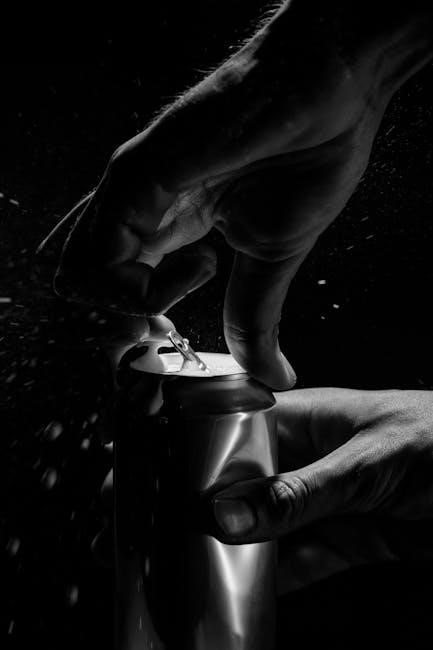
Maintenance and Care
Regular cleaning, proper storage, and battery care are essential. Inspect for damage and lubricate moving parts to ensure optimal performance and longevity of your detector.
5.1 Cleaning the Metal Detector
Regularly clean your Bounty Hunter metal detector to maintain its performance. Use a soft, dry cloth to wipe down the exterior, removing dirt and moisture. For stubborn dirt, dampen the cloth with water, but avoid harsh chemicals or abrasive materials. Never submerge the detector in water or expose it to excessive moisture. Clean the search coil gently, avoiding the coil’s electrical components. Allow all parts to air dry thoroughly before storing or using the detector again to prevent damage and ensure optimal functionality.
5.2 Storing the Detector Properly
Store your Bounty Hunter metal detector in a cool, dry place, away from direct sunlight and moisture. Avoid exposing it to extreme temperatures or humidity. Use a protective cover or case to shield it from dust and physical damage. Remove the batteries when storing for extended periods to prevent leakage. Disassemble parts like the search coil and store them separately to avoid bending or damage. Keep the detector away from metal objects to prevent interference. Cleaning before storage is recommended to maintain its condition and performance.
5.3 Replacing Batteries and Power Management
Use high-quality 9-volt alkaline batteries for your Bounty Hunter metal detector. To replace batteries, open the battery compartment located on the control panel. Ensure the compartment is clean and free from corrosion. Always check battery levels before use and avoid letting them drain completely. Store unused batteries in a cool, dry place. Consider using rechargeable batteries for cost efficiency. Turn off the detector when not in use to conserve power. Proper battery management extends the detector’s performance and lifespan.
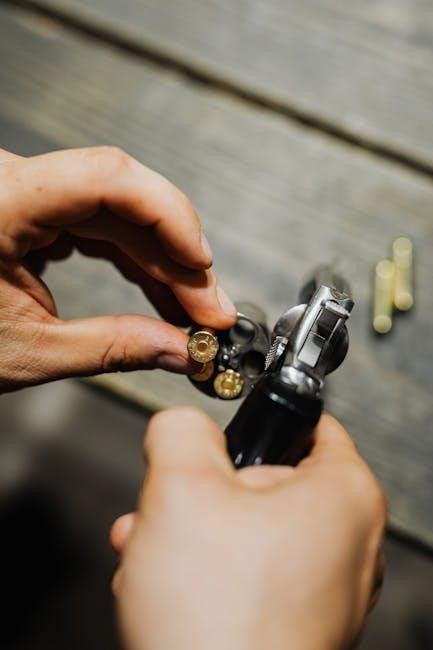
Troubleshooting Common Issues
Identify common issues like false signals or sensitivity loss. Check coil alignment, ensure proper ground balancing, and verify settings. Regular checks prevent operational disruptions.
6;1 Resolving False Signals
False signals can occur due to metal trash, incorrect settings, or environmental interference. To resolve this, reduce sensitivity, re-ground balance, or adjust discrimination settings. Ensure the coil is properly aligned and avoid areas with high metal contamination. Check for nearby electronic devices that may cause interference. Use the detector in a stable, upright position and avoid sweeping too quickly. Regularly cleaning the search coil and ensuring proper assembly can also minimize false signals. Always refer to the manual for specific troubleshooting steps tailored to your Bounty Hunter model.
6.2 Fixing Coil Alignment Problems
Coil alignment issues can affect detection accuracy. Ensure the search coil is properly secured and aligned with the detector’s stem. Check for loose connections and tighten any screws or clips. If the coil is misaligned, gently adjust it to maintain parallel positioning relative to the ground. After adjustments, perform a test sweep to confirm proper alignment. Regularly inspect the coil for damage or wear, as misalignment can also result from physical stress. Always follow the manufacturer’s guidelines for coil maintenance and adjustment to ensure optimal performance.
6.3 Addressing Sensitivity Loss
Sensitivity loss in your Bounty Hunter metal detector can occur due to improper ground balancing, interference, or outdated settings. First, ensure the detector is calibrated to the soil type by performing a ground balance. If issues persist, reset the sensitivity to its default setting and re-adjust as needed. For extreme mineralized soils, reduce sensitivity slightly to minimize false signals. Regularly cleaning the coil and checking for obstructions can also restore performance. Always refer to the manual for specific calibration procedures tailored to your detector model.
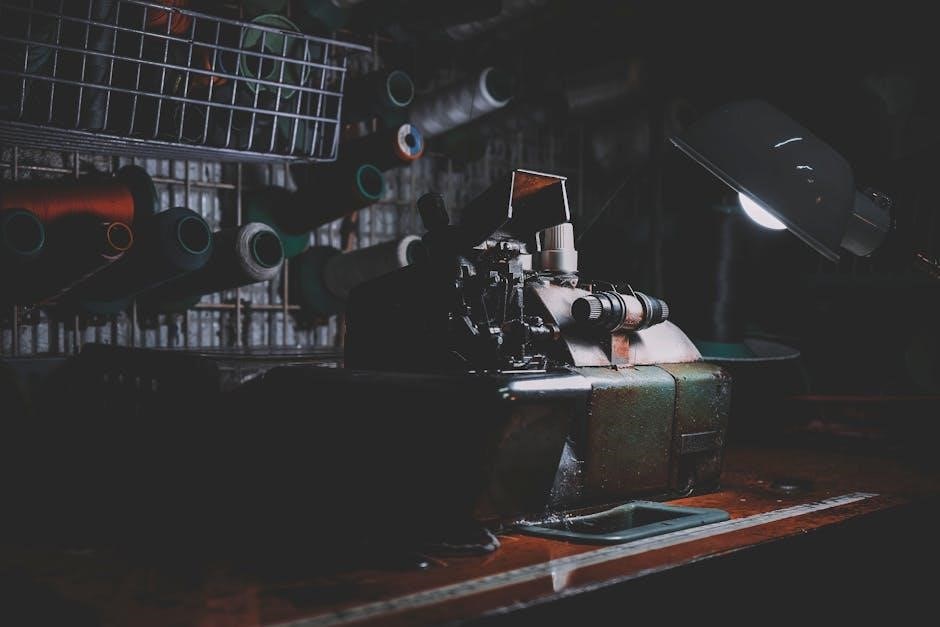
Accessories and Optional Equipment
Enhance your metal detecting experience with optional accessories like additional search coils, specialized headphones, and digging tools. These extras improve performance and convenience.
7.1 Coils and Search Coils
The Bounty Hunter metal detector offers interchangeable search coils, each designed for specific tasks. Standard coils provide balanced performance for general use, while optional coils, like concentric or DD designs, enhance sensitivity in mineralized soil or improve depth. Larger coils cover more ground, while smaller coils offer pinpoint accuracy. Additional coils can be purchased separately to customize your detector for different terrains and hunting scenarios, ensuring optimal performance in varying conditions.
7.2 Headphones and Audio Accessories
Headphones are essential for maximizing your metal detecting experience with the Bounty Hunter detector. Built-in speakers provide clear audio signals, but external headphones enhance sound quality, helping you distinguish faint tones; The detector supports wired headphones via its 1/4-inch jack. Optional wireless headphones offer added convenience, allowing for uninterrupted searching. Properly fitting headphones ensure comfort during long hunts. Adjusting volume settings and relying on tone ID features can help identify target types. Investing in high-quality audio accessories improves detection accuracy and enhances your overall hunting efficiency in various environments.
7.3 Additional Tools for Digging and Recovery
Essential tools for digging and recovery include a handheld trowel or small shovel for carefully uncovering targets. A recovery bag is useful for safely storing found items. Gloves protect your hands during excavation, while a small sifter helps sift dirt to locate small objects. Optional tools like a folding shovel or metal detector probe can aid in deeper searches. These accessories enhance efficiency and organization, ensuring you can retrieve targets without damage. Choose durable, lightweight tools to complement your Bounty Hunter detector for a seamless hunting experience.
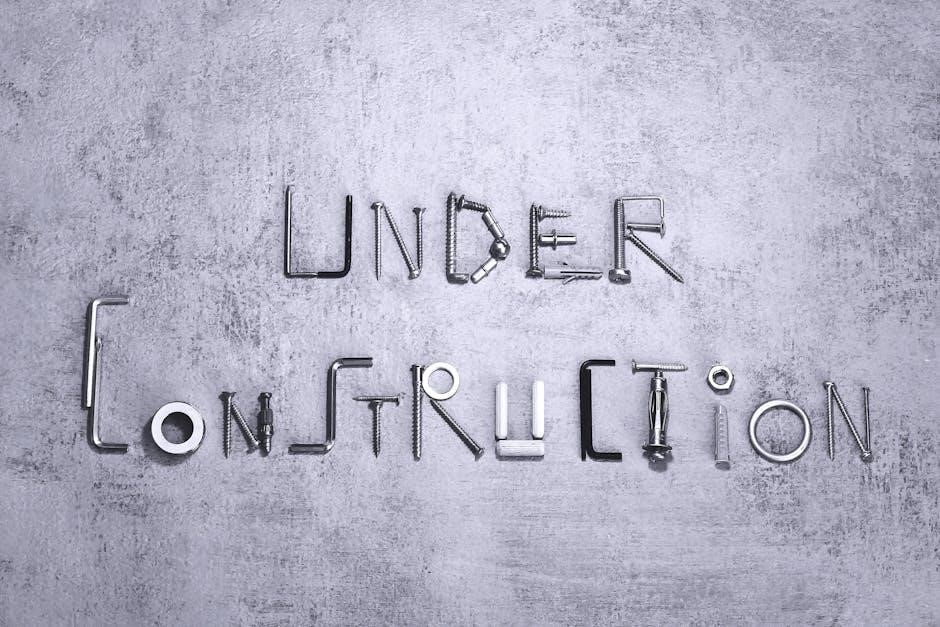
Advanced Techniques for Effective Metal Detecting
Mastering advanced techniques enhances detection accuracy and efficiency. Experienced users optimize search patterns, interpret signals precisely, and adapt to varying conditions for improved results and successful hunts.
8.1 Understanding Different Soil Types
Understanding soil types is crucial for effective metal detecting. Different soils, such as clay, sand, or loam, have unique properties that affect detection. Mineralized soils can cause false signals, while sandy soils may require adjusted sensitivity. Knowing your soil type helps optimize ground balancing and sensitivity settings for better target detection. This knowledge also aids in choosing the right search coil and technique, ensuring maximum efficiency in various terrains. Proper adjustment enhances detection depth and accuracy, making your hunting experience more productive and enjoyable.
8.2 Optimizing Search Patterns
Optimizing search patterns is essential for covering ground efficiently. Use systematic approaches like parallel lines or grid patterns to ensure thorough coverage. Adjust your coil size and sweep speed based on the search area. Overlapping sweeps help detect missed targets, while changing direction periodically ensures comprehensive scanning. Maintain a steady pace to avoid missing small objects. Varying scanning height can also uncover deeply buried items. By refining your search technique, you maximize detection accuracy and increase the chances of finding hidden treasures.
8.3 Interpreting Target Signals
Understanding target signals is crucial for successful metal detecting. The Bounty Hunter detector provides clear audio tones and needle indicators to help identify targets. High-pitched tones typically signal small, shallow objects like coins, while deeper, lower tones may indicate larger items. The needle on the gauge will also reflect the strength of the signal. Practice interpreting these cues to distinguish between valuable finds and trash. Accurate signal interpretation enhances your ability to locate desired targets efficiently and avoid unnecessary digging.

Safety Precautions and Best Practices
Always be aware of your surroundings to avoid accidents. Respect the environment by not damaging plants or wildlife. Obey local laws and regulations. Use the detector responsibly to maintain a positive reputation for the hobby and ensure access to detection sites for future use.
9.1 Following Local Regulations
Always check local laws and regulations before using your Bounty Hunter metal detector. Some areas restrict metal detecting in parks, historical sites, or private properties; Obtain necessary permits and ensure compliance with regional rules. Respecting these guidelines helps preserve access to detecting locations and avoids legal issues. Additionally, be aware of protected archaeological sites, as disturbing them may be illegal. Familiarize yourself with ordinances to ensure responsible and lawful metal detecting practices in your area.
9.2 Respecting Private Property
Always obtain explicit permission before using your Bounty Hunter metal detector on private property. Trespassing is illegal and can lead to serious consequences. Contact landowners or managers to request access, ensuring you have written or verbal consent. Respect any conditions set by the property owner, such as restricted areas or specific rules. Unauthorized entry can damage your reputation and the reputation of metal detectorists. By respecting private property, you maintain trust and ensure continued access to potential detecting sites.
9.3 Ensuring Personal Safety
Always prioritize personal safety while using your Bounty Hunter metal detector. Wear sturdy footwear and appropriate clothing for the terrain. Carry a first-aid kit and stay hydrated, especially in remote areas. Be mindful of potential hazards like uneven ground, sharp objects, or inclement weather. Avoid detecting in isolated locations alone and inform someone of your whereabouts. Ensure visibility by wearing bright or reflective clothing. Stay alert to your surroundings to prevent accidents and enjoy a safe metal detecting experience.
Mastering your Bounty Hunter metal detector leads to successful metal detecting experiences. Always respect the environment and follow safety guidelines. Happy hunting and enjoy the adventure!
10.1 Maximizing Your Metal Detecting Experience
To maximize your metal detecting experience, practice regularly and explore diverse terrains. Keep your Bounty Hunter detector well-maintained and experiment with accessories like coils or headphones for enhanced performance. Stay curious, as every hunt offers new opportunities for discovery. Respect the environment and local regulations to ensure sustainable metal detecting adventures. Engage with communities to share tips and learn from others. Most importantly, embrace the thrill of the hunt and enjoy the journey of uncovering history and treasures!
10.2 Staying Updated with New Techniques
Staying updated with new techniques enhances your metal detecting skills. Regularly visit online forums, watch tutorials, and attend workshops to learn advanced strategies. Subscribe to metal detecting communities for tips and updates. Experiment with new settings on your Bounty Hunter detector to optimize performance. Stay informed about firmware updates and accessory releases. Continuous learning ensures you stay ahead and make the most of your metal detecting adventures. Embrace new methods to improve accuracy and efficiency in your treasure hunts.